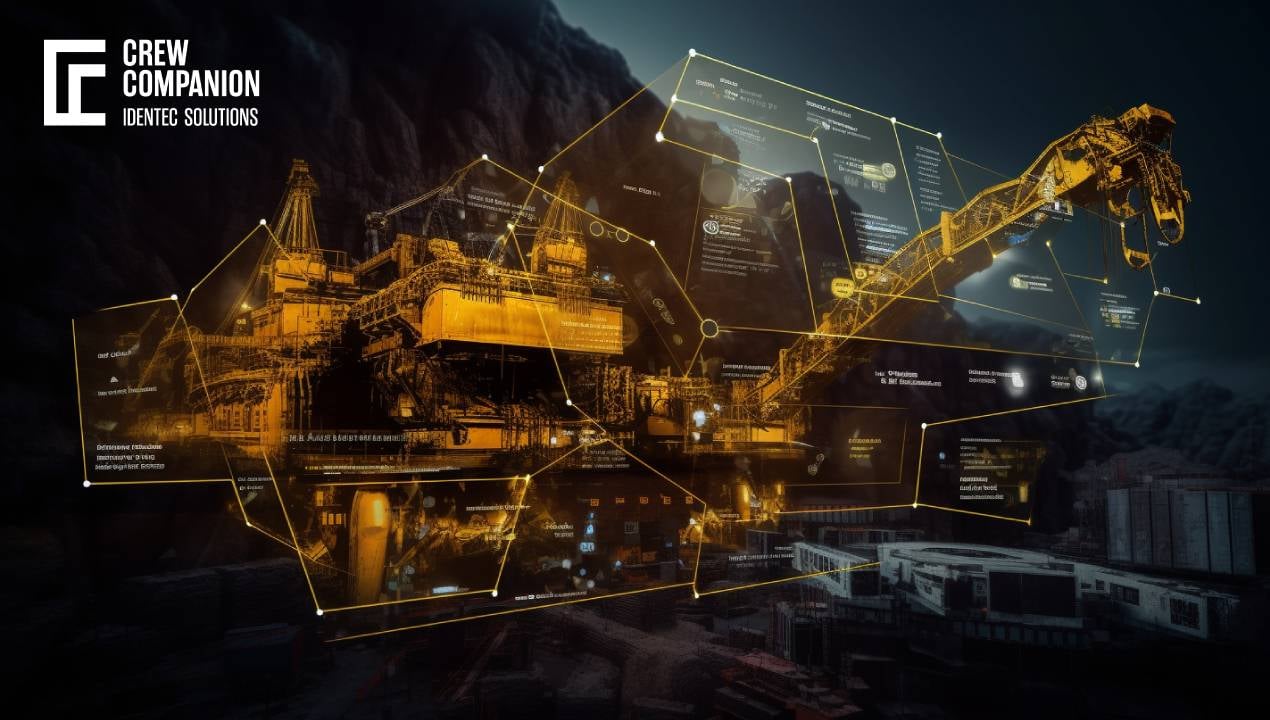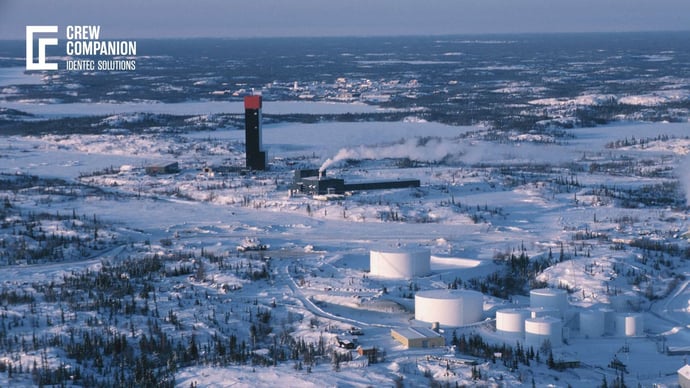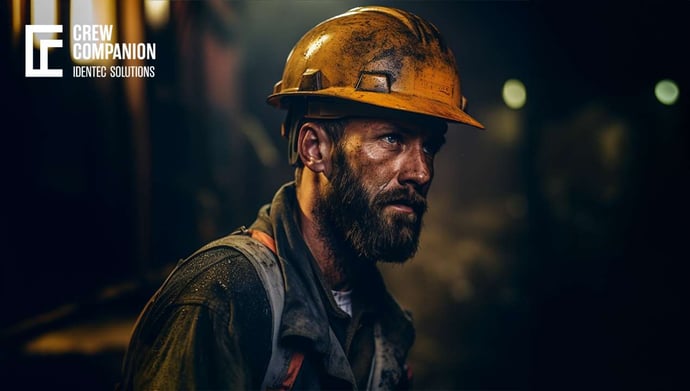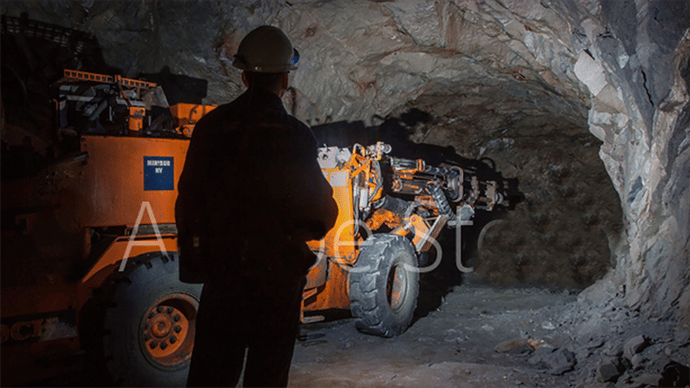Mining Risk Management: Digitalisation and Profitability
| Written by Michal Wozniakowski-Zehenter
The mining industry is undergoing a digital transformation by incorporating advanced technologies and data-driven processes to enhance operational efficiency, safety, sustainability, and decision-making. This includes the implementation of artificial intelligence (AI), machine learning, the Internet of Things (IoT), big data analytics, automation, and robotics to optimise various aspects of the mining value chain.
In this article, we enclose in which areas the implementation of digital solutions brings added value to mining risk management and operations.

No video selected
Select a video type in the sidebar.
NOT QUITE THE LEADING INDUSTRY
The mining industry's digital transformation journey involves integrating digital technology in every aspect of a mining company, resulting in streamlined operations and delivered value. In 2017, the World Economic Forum's whitepaper on 'Digital Transformation Initiative: Mining and Metals Industry' estimated a cumulative impact of over US$425 billion in value for the mining and metals industry from 2015 to 2025, which equals 3-4% of industry revenue. This digital transformation could also help reduce CO2 emissions by 610 million tonnes, with an estimated value of US$30 billion to society and the environment. Additionally, it could save 1,000 lives and prevent 44,000 injuries by improving safety measures. However, recent studies show that many mining and metals companies are struggling to achieve their digital ambitions. Although 100% of decision-makers agree that technology and innovation are vital for their organisation's survival, only half consider their progress towards implementing a digital transformation strategy as 'advanced.' Furthermore, the metals and mining industry is 30-40% less digitally mature than other comparable industries like automotive or chemicals (1).

EXPLORATION AND MINE PLANNING
As the mining industry continues to evolve, digital technologies are emerging as essential tools for exploration, planning, and design. With advanced geological modelling, remote sensing, and data analytics, miners can easily identify potential mineral deposits and estimate reserves with greater accuracy than ever before. This, in turn, enables them to optimise resource management, reducing environmental impact while maximising profits.
One of the most exciting developments in mining technology is the use of 3D modelling, virtual reality, and simulation techniques. These tools enable miners to create precise mine plans and designs, allowing for better visualisation, analysis, and optimisation of every aspect of the mine, from layout to extraction methods and equipment placement. With the help of virtual reality, miners can even simulate the entire mining process, identifying potential problems before they occur and improving safety for everyone involved.
Overall, the use of digital technologies in mining is transforming the industry and providing a more efficient, sustainable, and profitable way of doing business. As these technologies continue to evolve, we can expect to see even more exciting innovations in the years to come.
Continue reading here about mine safety equipment.
OPERATIONAL OPTIMISATION
Mining companies are now able to optimise their operations like never before. The Internet of Things (IoT) has made it possible for sensors to be embedded in equipment and processes, allowing for real-time monitoring. This has enhanced safety and efficiency, as data can be analysed instantly to identify potential issues and prevent accidents before they occur.
Moreover, predictive analytics and AI algorithms are being used to improve equipment maintenance and operational decision-making. By analysing large amounts of data, these technologies can predict when equipment is likely to fail, enabling maintenance teams to take proactive measures to prevent downtime. Additionally, they can provide insights into which processes are most effective, helping managers make informed decisions that lead to improved productivity and reduced downtime.
Overall, as mining companies continue to invest in these technologies, we can expect to see even more innovation and progress in the years to come.
ROBOTICS AND AUTOMATION
The use of automation and robotics in mining has opened up a world of possibilities, revolutionising the sector in ways never before imagined. With the ability to take over dangerous and repetitive tasks, these machines have significantly reduced workplace accidents and injuries, all while increasing productivity levels. The introduction of autonomous haulage systems is a perfect example of this, as they can operate continuously without the need for a driver, thereby reducing downtime and maximising output.
Additionally, robotic drilling machines have proven to be game-changers. They work faster and with greater accuracy, resulting in quicker and more precise mineral extraction. Furthermore, remote-controlled machinery has enabled workers to operate equipment from a safe distance, minimising exposure to hazardous environments.
SAFETY FIRST WITH MINING RISK MANAGEMENT
The mining industry has always been a risky business, but with the advent of digital technologies, safety measures have been significantly improved. Real-time monitoring of environmental conditions, worker health, and safety protocols has become possible through the use of wearable devices, connected sensors, and advanced data analytics. These tools enable mining companies to take proactive safety measures and assess risks to prevent accidents and ensure compliance with regulations.
One of the most significant advantages of this mining technology is the ability to track worker movements and monitor environmental conditions. This means that companies can identify potential hazards before they become serious and take corrective actions to prevent accidents from happening. By doing so, they not only ensure the safety of workers but also reduce downtime and improve productivity.
Digital technologies have revolutionised safety in mining and are set to play an even bigger role in the future. With the use of advanced data analytics, companies can now analyse large amounts of data to identify patterns and trends that may indicate potential hazards. This allows them to take proactive measures to prevent accidents and develop more effective safety protocols.
EVEN BETTER SUPPLY CHAIN
The mining industry has always been known for its complex and challenging supply chain processes. From sourcing raw materials to transporting finished products to customers, countless moving parts need to be managed effectively. However, with the advent of digital transformation, mining companies can leverage advanced technologies to optimise their supply chain and stay ahead of the competition.
One such technology has revolutionised the mining industry: real-time shipment tracking. By utilising sensors and GPS devices, mining companies can track the location and status of their shipments in real time. This enables them to monitor their progress, identify potential delays, and make necessary adjustments to ensure timely delivery.
Another technology that has proven to be immensely useful in the mining supply chain is predictive analytics. By analysing large amounts of data from various sources, mining companies can gain valuable insights into their operations and identify areas where they can improve efficiency and reduce costs. For instance, they can use predictive analytics to forecast product demand, optimise inventory levels, and improve procurement processes.
Finally, blockchain technology has emerged as a game-changer in the mining industry. By providing a secure, transparent, and tamper-proof record of transactions, blockchain can help prevent fraud, reduce waste, and promote ethical sourcing practices. This is particularly important in the mining industry, where there have been concerns about environmental and social impacts.
GREEN, GREENER, SUSTAINABLE
The adoption of digital technologies in the mining industry has opened up new opportunities for companies to reduce their environmental impact while enhancing their operational efficiency. Mining companies have been able to collect and analyse vast amounts of data from their operations, which allows them to optimise their resource utilisation and reduce waste.
Additionally, advanced monitoring systems have enabled mining companies to track their energy and water consumption in real time, allowing them to adjust and reduce their environmental footprint. Automation has also played a major role in reducing the environmental impact of mining activities, as it has allowed for the deployment of more energy-efficient equipment and processes. As we move towards a more sustainable future, the mining industry is poised to play a critical role in reducing our collective environmental impact.
WORKFORCE
There is a growing need for companies to transform their workforces. This transformation involves upskilling and reskilling employees to effectively operate and maintain advanced technologies, such as data analytics and automation systems.
Not only does this require investment in training programs and resources, but it also necessitates a shift in company culture to embrace digital innovation. Collaboration tools and digital platforms have become increasingly important in enabling remote work and facilitating knowledge sharing among employees, regardless of their physical location.
Ultimately, the successful integration of digital technologies ("personnel tracking") in mining relies on a workforce that is adaptable, innovative, and equipped with the necessary skills to thrive in a rapidly changing industry. By investing in workforce transformation, mining companies can remain competitive and achieve sustainable growth in the digital age.
Read more about "Lone Worker Safety"
BEST PRACTICES
Digitalisation is achieved by providing mines with increased real or near real-time access to critical data from their mobile heavy equipment. As mining risk management requires more data beyond what their OEM equipment offers, new applications and often their associated hardware are integrated into the equipment.
Without a clear understanding of long-term business data requirements, the cost of digitalisation can quickly escalate due to the multiple technologies required. Adding new technologies over time often leads to unforeseen challenges, such as multiple hardware platforms on board and individual access to assets. For instance, if an asset health system and a productivity monitoring system are installed at different times, each may come with its own hardware and require connectivity to radios, GPS antennas, and onboard systems. This results in challenges due to multiple access points to a single resource. Additionally, each product's hardware may necessitate a range of costly accessories like Ethernet switches, power filters, and GPS antennas.
The cost of shutting down heavy equipment for several hours to install new hardware is often underestimated. Given that equipment downtime can cost up to $10,000 per hour, installation costs can quickly reach hundreds of thousands of dollars. Furthermore, troubleshooting and maintenance costs increase with the presence of multiple disparate hardware systems on mobile equipment. More hardware not only means more points of failure but also more time spent diagnosing issues. These problems will worsen as mines advance in the digitalisation process, adding more applications such as proximity detection, machine guidance, high-precision GPS, and video.
Reality in the mine
A study (2) provides valuable insights for firms in traditional asset-intensive industries regarding their current status and constraints in digital transformation, enabling them to choose the most suitable approaches moving forward. Partnering companies in the study engaged in these industries’ digital transformation can use this study to identify challenges and risks, ultimately enhancing collaboration and problem-solving with their customers.
Based on the study's findings, the authors recommend that managers driving or planning to drive their firm's digital transformation should:
- Set Achievable Targets with Continuous Investment: Regardless of the business model, processes, and organizational structures, companies must recognize that digital transformation is a long-term, ongoing process that requires a focused strategy, well-planned investments, managerial support, encouragement, and a degree of experimentation.
- Collaborate with Peers: Well-chosen partnerships can fill technological gaps and enhance digital capabilities in a timely and flexible manner.
- Recruit Digital Talent: In addition to partnerships, firms should strengthen their own digital capabilities through external hiring or internal training to ensure sustainable growth and maximize value from digitalization.
- Emphasize “Outside-In” Innovation: Traditional “inside-out” innovation models should be complemented with a customer-centric approach that thoroughly explores customer needs, processes, and goals. This approach ensures that digital transformation aligns with customer expectations and market demands.
The metals and mining industry is facing several broad challenges, including an ageing workforce, high operational costs, declining ore grades, and harsh operating environments. While digital transformation is not a one-size-fits-all solution, it remains a crucial initiative for overcoming these challenges. We believe the industry is moving toward the digital era, but reaching this goal requires hard work, investments, wisdom, and patience.
FAQs
What is risk management in mining?
Mining operations are inherently risky, with numerous hazards associated with the industry, including accidents, environmental damage, and regulatory penalties. To manage these risks, mining companies must implement a comprehensive risk management framework that involves identifying, assessing, and mitigating potential risks, as well as ongoing monitoring and review to ensure that risk management strategies remain effective over time.
Effective risk management practices not only promote safer working conditions but also help mining companies to comply with regulatory requirements, protect the environment, and improve operational performance. By implementing best practices, mining companies can reduce their exposure to potential losses and liabilities, safeguard their reputation, and ultimately enhance their long-term success.
Who is a mining manager?
Mining managers play a crucial role in the mining industry as they are responsible for the efficient functioning of mining operations. They plan and coordinate all mining-related production activities, including managing physical and human resources and budgets. They work closely with engineers, geologists, and other professionals to ensure the mining operations run smoothly.
The work of mining managers is often split between an office and mining sites. While in the office, they analyse data, develop strategies, and coordinate with other departments. However, they also regularly travel to mining sites to oversee the operations, ensure compliance with regulations, and troubleshoot any problems.
Due to the nature of their work, mining managers often have to work evenings and weekends. They need to be available to respond to any emergencies or unexpected situations that may arise. Additionally, they must be able to adapt to changing circumstances and make quick decisions to ensure their employees' safety and the mining operation's success.
TAKEAWAY
Digital transformation has become an integral part of the mining industry, revolutionising traditional mining methods and practices. By embracing digitalisation, mining companies can now effectively monitor their operations, detect potential hazards, and optimise their production processes. These data-driven insights allow for proactive decision-making, reducing downtime and increasing productivity. Moreover, with the help of advanced technologies such as big data analytics, machine learning, and artificial intelligence, companies can analyse vast amounts of data and gain valuable insights into their operations, and mining risk management, enabling them to improve their safety, sustainability, and profitability. The benefits of digital transformation in mining are clear, and companies need to keep up with the latest technological developments to remain competitive and stay ahead of the game. If you want to learn about other latest trends in the industry, read more articles or some of our whitepapers (like "Mine Risk Management and Safety Equals Productivity")!
Dive deeper into one of our core topics: Miner Safety
Sources:
(2) Gao, S.; Hakanen, E.; Töytäri, P.; Rajala, R. (2019): Digital Transformation in Asset-intensive Businesses: Lessons Learned from the Metals and Mining Industry (https://scholarspace.manoa.hawaii.edu/handle/10125/59930)
Note: This article was updated on the 10th of May 2024

Author
Michal Wozniakowski-Zehenter, Marketing Manager
Michal Wozniakowski-Zehenter is an experienced marketing and project management professional. He spent most of his career on projects with a strong focus on digital marketing and event management. He is a very active voice representing offshore and mining industries through social media channels. Michal writes mainly about offshore oil and gas, renewable energy, mining and tunnelling. Compiling and sharing the knowledge within industries is one of his goals.




